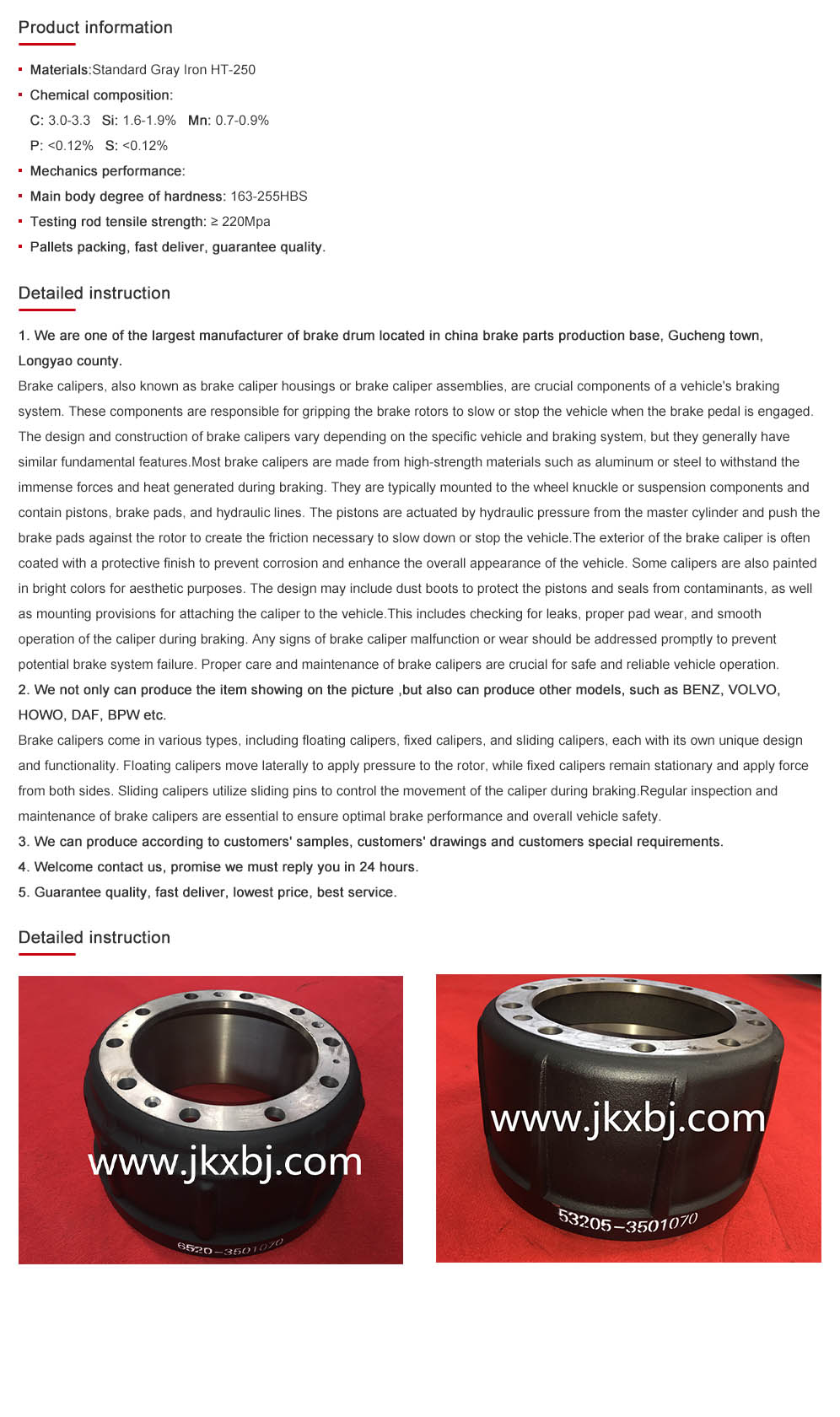Dec . 05, 2024 16:18 Back to list
Do Brake Drums Require Pads for Effective Stopping Power in Vehicles
Do Brake Drums Have Pads?
When it comes to vehicle braking systems, understanding the components and how they function is crucial for both safety and performance. One of the most common questions among drivers and car enthusiasts alike is, Do brake drums have pads? To address this query, we must first delve into the anatomy of braking systems and elucidate the differences between drum brakes and disc brakes.
The Basics of Brake Systems
Brake systems are primarily designed to slow down or stop vehicles efficiently. Most modern vehicles utilize either drum brakes or disc brakes, each with distinct components and mechanisms. Disc brakes consist of a rotor and caliper, while drum brakes involve a drum and shoes. This fundamental difference is crucial when we discuss whether brake drums have pads.
What Are Brake Drums?
Brake drums are cylindrical components attached to the wheel hub. When the driver presses the brake pedal, the brake shoes, which are located inside the drum, press against the drum's inner surface to create friction. This friction slows down the vehicle. The materials used in brake shoes are usually a composite of metal and friction materials designed to withstand high heat and wear.
Do Brake Drums Have Pads?
To directly answer the question no, brake drums do not have pads in the traditional sense used in disc brake systems. Instead, brake drums use brake shoes. The shoes perform a function similar to pads in disc brakes but are shaped differently and operate within the confines of the drum. Brake shoes have a friction material that, when engaged, presses against the inner surface of the rotating drum.
do brake drums have pads

Brake Shoes vs. Brake Pads
Understanding the difference between brake shoes and brake pads clarifies why brake drums do not use pads. Brake pads are flat and are designed to clamp onto the outer rotor to create friction, while brake shoes are curved and are placed inside the drum. This difference in design affects not only the components themselves but also their performance characteristics, heat dissipation, and maintenance requirements.
Advantages and Disadvantages
Both braking systems have their advantages and disadvantages. Drum brakes are generally more effective for low-speed applications and have inherent self-energizing properties. This means that the force applied to the brakes actually assists the braking process. However, drum brakes can suffer from overheating and are less effective in dissipating heat than disc brakes. Consequently, the prevalence of drum brakes has decreased in modern vehicles with the increasing emphasis on high performance and efficiency.
Maintenance Considerations
For those who own vehicles equipped with drum brakes, regular maintenance is essential. Inspecting brake shoes for wear, ensuring the braking mechanism functions properly, and checking for any signs of overheating or damage can prolong the life of the braking system. Unlike brake pads, which are relatively easy to replace and require periodic checking, drum brake components may need more comprehensive servicing due to their more complex design.
Conclusion
In summary, brake drums do not have pads; instead, they feature brake shoes that operate within the drum to create the necessary friction for slowing or stopping the vehicle. Understanding the components of your vehicle’s braking system, whether drum or disc, is vital for ensuring safety and effective performance. Drivers should remain informed about their vehicle's maintenance needs and consult professionals if they suspect any issues with their braking system. Whether you favor the simplicity of drum brakes or the efficiency of disc brakes, knowledge about these systems enhances your ability to care for your vehicle properly.
-
Scania Brake Drums: OEM Quality for Optimal Safety & Durability
NewsAug.16,2025
-
R.V.I: Advanced Remote Visual Inspection for Precision
NewsAug.15,2025
-
Discover HYUNDA: Innovative Vehicles, Equipment & Solutions
NewsAug.14,2025
-
R.V.I: Unlock Advanced Insights & Real-time Performance
NewsAug.13,2025
-
Kamaz Brake Drum: Durable & Reliable for Heavy Duty Trucks
NewsAug.12,2025
-
Heavy Duty Iveco Brake Drum - Premium Quality & Safety
NewsAug.11,2025
